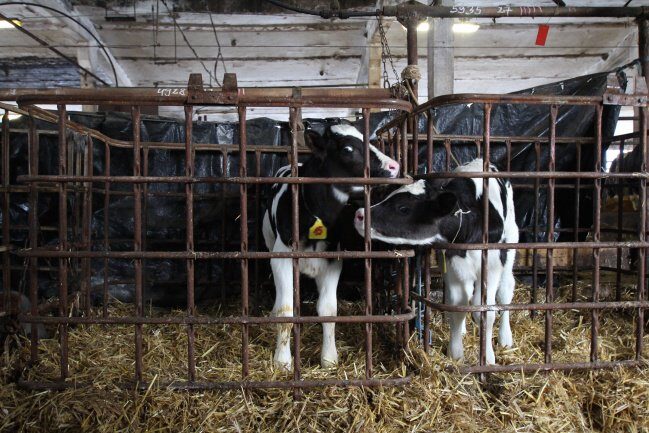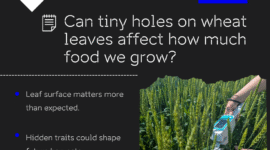On January 27th, a new cow calf was born. She looks and acts like any other newborn calf. But what is special about her is the way she was brought into this world.
It is the first cow calf in Estonia who’s derived from the OPU technology by grafting the egg from a live animal by extraction, cultivation and embryo transfer method. With this kind of experiments our veterinary scientists want to develop a service for the extraction of bovine embryos in order to intensify cooperation between researchers and practitioners and to improve the competitiveness of the agricultural sector.
Elina Mark, Junior Research Fellow at the Department of Animal Breeding and Biotechnology in Estonian University of Life Sciences, confirms that this is the third calf born with this method in Estonia. The first calf was born last August and is now a good adolescent. The second calf saw the light on January 2nd, and on January 27th, the expected cow was born.
To put it simply, this method is to maximize the use of herd top genetics in the interests of the dairy and meat producers. The farm manager chooses donor breeds with the best genetic characteristics from which eggs are taken. The cells are fertilized in a laboratory and grown into small embryos in a test tube for seven to eight days. Then the embryos can either be frozen or freshly transplanted to the recipient animals. No hormonal stimulation is used in neither donor nor recipient animals. Nine months later, the heifer/cow will calve.
Tests for the development of the technology began a year and a half ago at the Estonian University of Life Sciences. Fertilized eggs were not transplanted immediately, first the laboratory tests were performed and the procedures were set. Then the first embryo transfer was carried out and on August 9th 2017, the first baby bull of this technology was born. At this moment, nine more cows are carrying the so-called test tube boasts.
Until this moment, researches at the Estonian University of Life Sciences have experimented infertility testing with heifers and cows in cooperation with Tartu Agro at their barn. In the near future, it is planned to start research with breeders of beef. Our researchers also desire to be a partner for the private sector to increase milk and meat production in animals, reduce the age gap between generations in the herd, use the best genetics effectively and to get offspring from those animals that do not get pregnant by insemination.
The development of OPU-IVP technology is carried out with the VIVET project in cooperation with Tartu Agro Inc, Estonian University of Life Sciences and The Competence Centre on Health Technologies. The project is funded by Estonian Agricultural Registers and Information Board, Estonian Rural Development Plan (ERDP) for 2014–2020. The project is supported by Horizon 2020 twinning project SEARMET.
Original post by the Estonian University of Life Sciences.
 Back
Back



